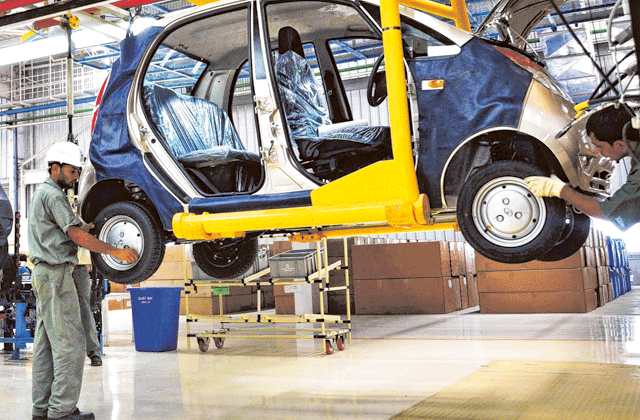
Mumbai: India’s auto industry on Wednesday lowered its annual growth forecast for car sales for the third time this fiscal year, as a slowing economy and costlier loans keep buyers away from showrooms.
The Society of Indian Automobile Manufacturers (SIAM) now predicts sales of between zero and 1.0 per cent, down from 1.0 to 3.0 per cent, spelling bad news for global carmakers seeking to expand beyond stagnant western markets.
“Our earlier forecast of up to 3.0 per cent growth appears too distant. The overall sentiment is very weak,” said SIAM’s deputy director general Sugato Sen.
The New Delhi-based group said domestic car sales in December fell 12.5 per cent to 141,083 units from a year earlier.
If SIAM’s new forecast for the fiscal year to March 2013 proves accurate, it means growth will be the weakest since fiscal 2001-2002, when car sales rose by just 0.5 per cent, analysts said.
Demand for cars in India has been weakening due to rising fuel prices, high interest rates and a slowing economy. Automakers are introducing new models and variants and offering discounts to woo customers.
Sen said the scenario could improve if taxes on automobiles were reduced and inflation and interest rates started to ease.
Car sales rose between 2004 and 2011, with a jump over the fiscal year 2010-2011 of 30 per cent to 1.98 million units, as an increasingly affluent middle class snapped up new models with the help of cheap loans.
Global auto makers such as Ford, General Motors and Nissan have invested millions of dollars in the past few years in India to capitalise on this growth market and use the country as a global manufacturing base.
“The economy is stuck in a slow lane, which has hit demand,” said Mahantesh Sabarad, auto analyst with Fortune Equity Brokers.
India has the biggest current-account deficit among the largest emerging markets, stoked by the worst export slump since the 2009 global recession and gold imports that Finance Minister Palaniappan Chidambaram said are a “huge drain”. Trade and budget gaps have increased economic risks, the Reserve Bank said December 28, even as the government tries to lure more foreign investment and limit subsidies as Asia’s No. 3 economy struggles.
The Finance Ministry predicts GDP growth of as little as 5.7 per cent in the year to March 31, the least in a decade. India’s central bank raised interest rates a record 13 times from March 2010 to October 2011 to rein in inflation.












